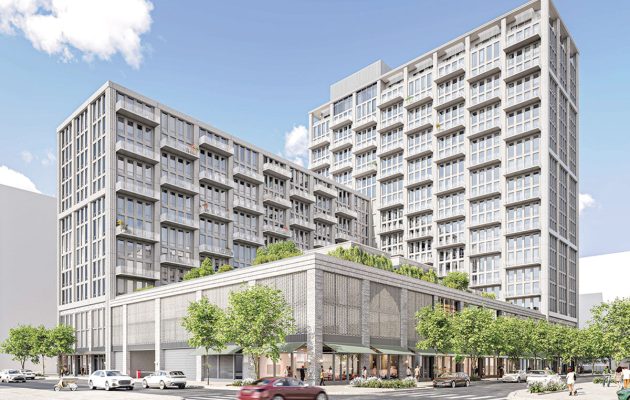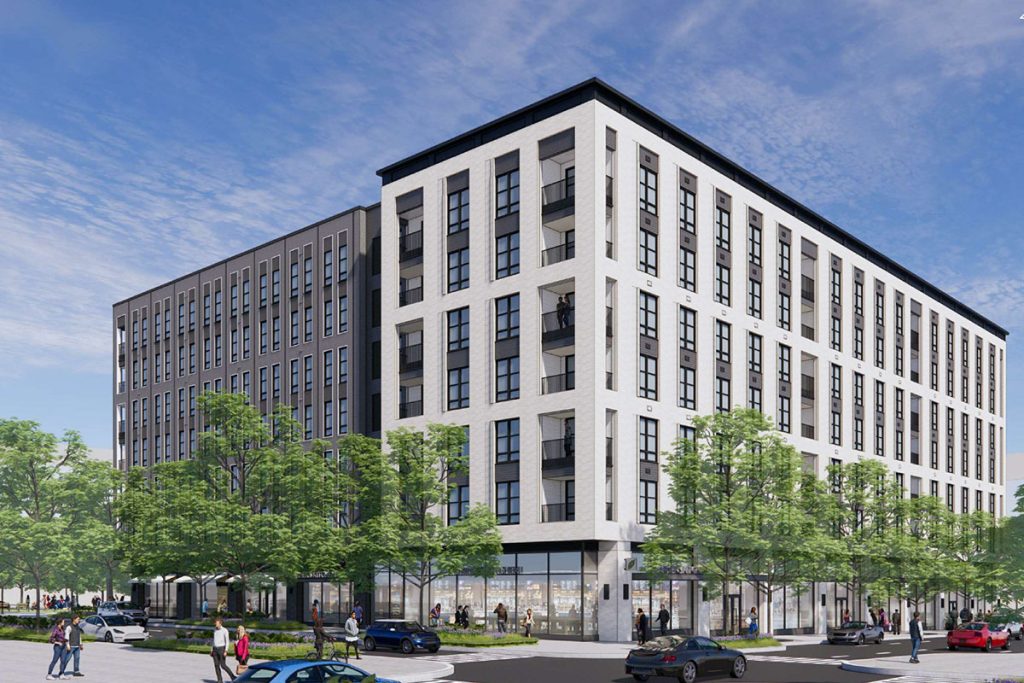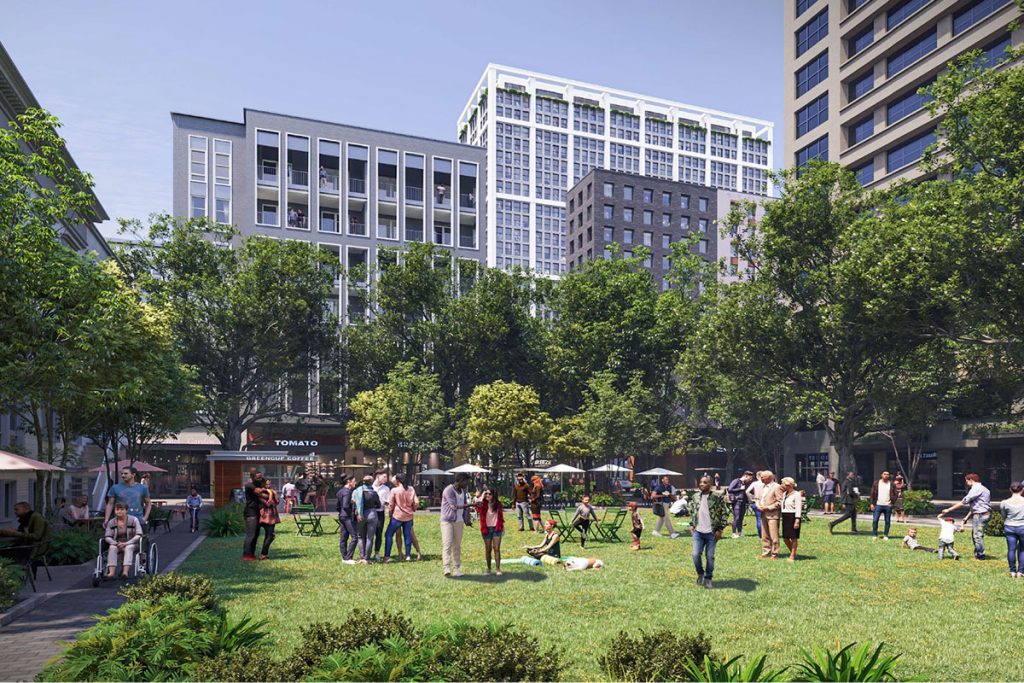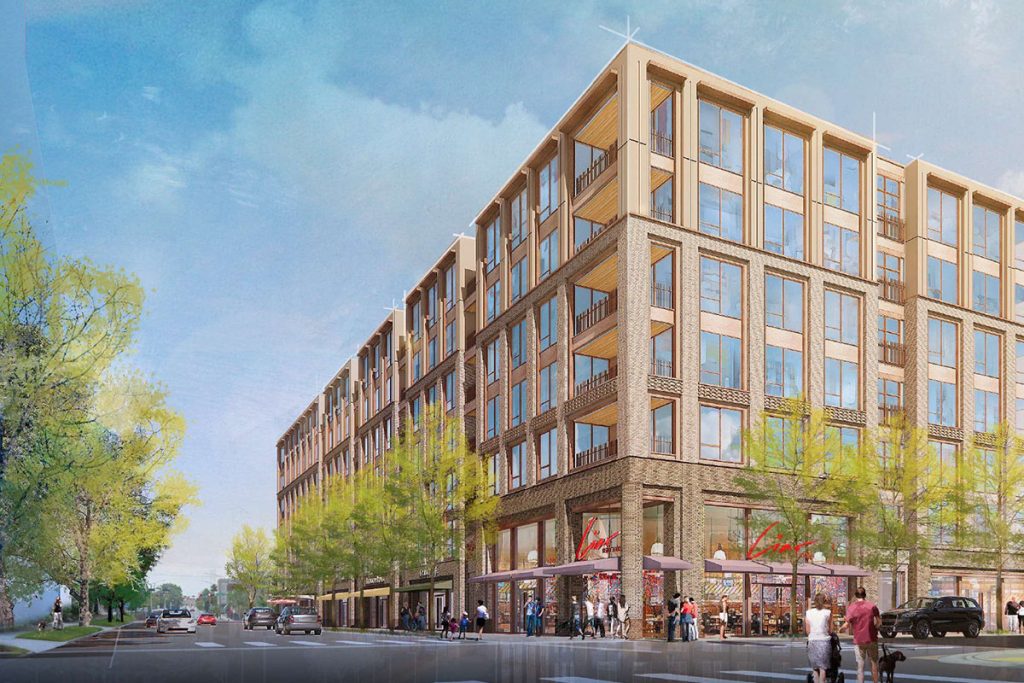First Projects of Pearl Street District Advance Through Conceptual Approval
Posted on November 1, 2023 By Editor Top Stories

Jacksonville’s Downtown Development Review Board (DDRB) met on Thursday, Oct. 12. The board reviewed and granted conceptual and final approvals for several projects including the five-block Pearl Street District multi-phase plan included in the proposed Gateway Jax development which was first announced in September.
Ultimately, plans for this expansive development could include up to 22 acres in the North Core area of downtown in a reported $500 million development.
The Pearl Street District is the first project of this development and includes five buildings along Pearl Street bordered by Union, Church, Clay and Julia streets.
The Pearl Street District returned to the DDRB for final approval last month, which it achieved with a unanimous vote (with board members William Schilling, Jr. and Christian Harden recusing themselves because of voting conflicts).
Following the final approval for the overall Pearl Street District development, board members considered three of the five projects within the Pearl Street District for conceptual approval. These projects are:
Pearl Street N-11

This seven-story mixed-use project consists of approximately 21,000 square feet of ground floor retail space and 205 residential units. This development pad, bordered by Ashley, Church, Clay and Julia streets, currently contains a surface parking lot and the historic Porter House Mansion. Proposed plans for this block introduce two new green spaces for public access on either side of Porter House, intended, according to attorney Cyndy Trimmer, representing the applicant for Pearl Street District project, “to draw the attention and the activity from the city center into this public space.”


The southern Porter House Mansion park will be a “serene, intimate gathering place” with a water feature at its center while the northern park will contain an open, “activated lawn.”
“This parcel is placemaking. This is what placemaking is,” said DDRB Vice Chair Linzee Ott.
The team for this project includes developer Gateway Jax, SK+I Architecture, Hoerr Schaudt Landscape Architects and England-Thims & Miller, Inc. (ETM).
Pearl Street N-8

Bordered by Beaver, Ashley, Clay and Pearl streets, this lot consists of surface parking and vacant lots. Plans presented to DDRB for this development pad propose a 22-story mixed-use building with 62,000 square feet of ground- and second-floor retail space, 530 residential units and two levels of parking.
This development pad will give the appearance of three buildings of different orientations and heights. The residential units begin on the fourth floor of the structure. Included in those residential units are 23 furnished units all situated on the fourth floor.
“We tried to offer these both to cater to the hospitality audience – we’re next to that medical district, we’re going to have that UF campus – but we also think Jacksonville is going to be a destination where people will want to come and stay for a period of time and not necessarily haul everything with them. So, it’s dual-purpose to cater to all of those audiences,” said Trimmer of the furnished units.
Plans for this N8 development pad also pay homage to a significant historical structure that once stood within that block – the Ebenezer Methodist Church. Ian Mills, executive director of the New Orleans office of Morris Adjmi Architects – the architectural firm for the N8 development pad – highlighted an homage included in the designs of this pad to the church in the form of an arched window reminiscent of the one within the church’s nave, “very close” to where the original window once was at the church’s location there when it stood on the southwest corner of the development pad.
The team for this project includes developer Gateway Jax, Morris Adjmi Architects, Hoerr Schaudt Landscape Architects and England-Thims & Miller, Inc. (ETM).
Pearl Street N-4

The final development pad presented to the DDRB at its October meeting was the N4 development pad for the Pearl Street District project. Currently vacant – except for an existing development at 716 North Pearl Street, which will not be part of the Pearl Street District – this is the proposed site for a seven-story mixed-use building with 16,000 square feet of ground floor retail space, 270 residential units and two “partial” parking levels.
The team for this project includes developer Gateway Jax, Boston-based Elkus Manfredi Architects, Hoerr Schaudt Landscape Architects and England-Thims & Miller, Inc. (ETM).
All three development pads – N-11, N-8 and N-4 – will now advance with conceptual approval.
Incentives Still Pending
In an interview with The Resident News, Downtown Investment Authority (DIA) CEO Lori Boyer stated the area where the proposed Pearl Street District project will stand is “ripe for a larger-scale impact not just in density, but this is a part of downtown that is significantly underdeveloped, underutilized, undervalued and so the opportunity here is greater than say, in Brooklyn or Southbank, when you’ve already realized a lot of that economic value.”
Boyer added the DIA had hoped to present an incentives package to its October board meeting but said “it will probably be several weeks before we have that real information on the incentives.”
Regarding the utility service capacity and infrastructure needed to support a project of this scale, Boyer doesn’t foresee any necessary upgrades or enhancements other than looking to the developer to improve the pedestrian and bicycle experiences within the entire area, not just for the one block.
“The decision by the applicant to improve the sidewalks on the opposite side of their property really shows their dedication to not just their own project but the entire neighborhood that will exist in downtown. I think that was a great decision and we commend you for that,” DDRB Chair Matt Brockelman said
By Michele Leivas
Resident Community News




 (No Ratings Yet)
(No Ratings Yet)DDRB, Downtown development review board, Pearl Street District






